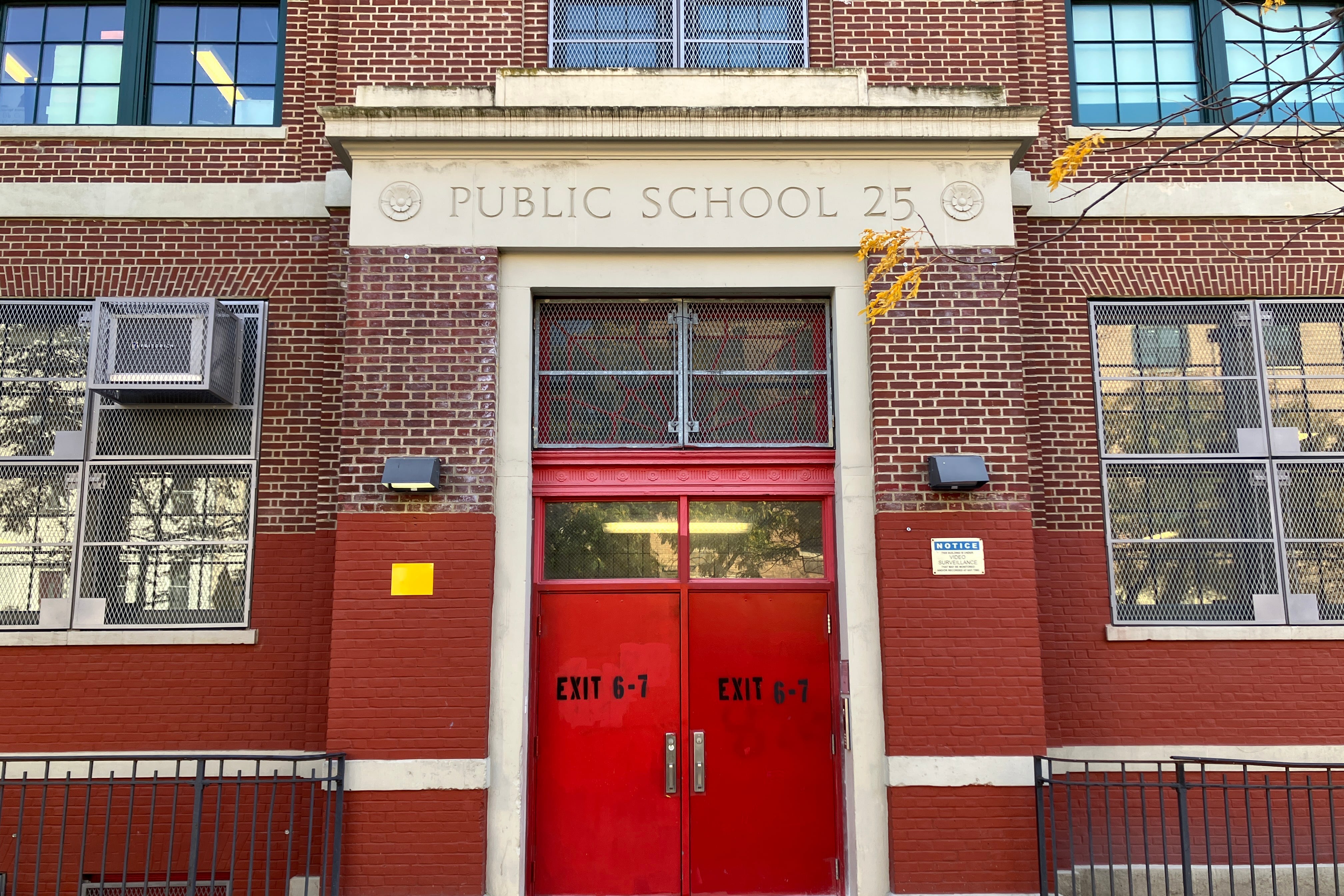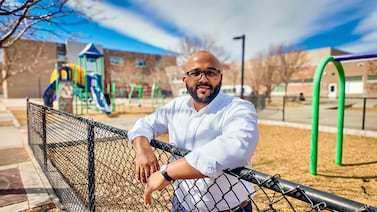This is part of Chalkbeat New York’s ongoing coverage on how enrollment shifts are reshaping education and affecting NYC’s plans to close, merge, or open schools.
Education officials are once again floating plans to close a tiny Brooklyn public school that survived a previous effort to shut it down.
The Education Department is moving to shutter P.S. 25, a Bedford-Stuyvesant school that currently enrolls just 52 students in grades K-5, making it the smallest school in the city, officials said. Its shrinking roster makes it all but impossible to offer quality programs because funding is tied to student headcount, District 16 Superintendent Brendan Mims wrote in a recent letter to families.
“The ongoing challenge of declining enrollment has financially impacted the school’s ability to provide a robust learning environment for students,” Mims wrote, notifying parents of plans to close the school.
The campus is an extreme example of a growing problem locally and among districts across the country. As enrollment declines have deepened in the wake of the pandemic, the number of New York City schools with fewer than 200 students has more than doubled to 190 campuses last year up from 81 in 2016.
Paradoxically, tiny schools are both expensive to run and struggle to afford the basics. The Education Department spent $45,420 per child last year at P.S. 25, more than double the city average. Yet the school has been unable to pay for a full slate of art and music teachers and has limited funding for after-school programs, according to Mims’ letter.
The superintendent added that the school is one of the lowest-performing in the district (though six years ago it posted significantly higher test scores). In the 2022-23 school year, roughly one-third of P.S. 25 students who took state reading and math tests were considered proficient. More recent results were not publicly available because so few students took the exams.
Even as shuttering small schools can make sense on paper, the process often generates intense pushback from parents, educators, and elected officials who want to save a beloved community hub. To avoid some of that outcry and disruption, city officials have favored mergers to reduce the ranks of tiny schools, closing just one school over the past six years — making the plan to shutter P.S. 25 an outlier.
A vote by the Panel for Educational Policy to close the school has not yet been scheduled. If the proposal is approved, the school would close at the end of the academic year.
P.S. 25 has been in the Education Department’s crosshairs before
When city officials tried to close the school six years ago as its enrollment began to slide below 100 children, advocates filed a lawsuit to block the closure. They argued the closure required action from the local parent council because it would have left some families without a zoned option, and the councils have authority over zoning.
The Education Department ultimately settled the case and kept the school open.
The president of the District 16 Community Education Council, NeQuan McLean, supports the current closure plan and said the council plans to work with the Education Department on a formal rezoning process to avoid a similar lawsuit.
“It’s our responsibility to make sure they have a robust education experience, and right now, those students don’t have one,” McLean said. “At the end of the day, we have to do what’s best for kids.”
McLean said he favors closing the school rather than merging it to give families maximum flexibility to pick new schools for their children rather than funneling them all into a newly merged school, a process he said often doesn’t work well.
Some parents say the school needs more time to turn around
P.S. 25 families expressed mixed feelings about the proposal — and some said they had not been informed of the city’s plans.
Iris Rojas, who was unaware of the closure proposal, said she likes sending her third grade son to a small school where he feels at home. When the family got caught in the rain on the way to school one morning, staffers were quick to provide her son with a change of clothes.
“My son loves it here,” Rojas said on a recent afternoon just after dismissal. “They make me feel welcome as a parent.”
But her son often struggles with schoolwork and hasn’t gotten the support she expected, raising questions in her mind about the quality of instruction and whether the school has funding for extras like tutoring. She also wishes there were more activities during the day, like singing or dancing.
“I have hope for the school,” she said. “But it does need some help.”
Department spokesperson Jenna Lyle stressed that the city is committed to community engagement as the city moves ahead with shutting the school. “The district leadership team has been working diligently to ensure that families are not only aware, but engaged and heard, and we will continue to work with our families as we move towards a closure proposal.”
Other caregivers said they were concerned about what alternatives would be available in the event of a closure. “It’s the nearest school to us,” said Charm Jones, whose nephew is in kindergarten. “It’s a good school.”
Leonie Haimson, who helped bring the lawsuit challenging the P.S. 25 closure six years ago and runs the advocacy group Class Size Matters, said she also is concerned about where the city might send the remaining students, 87% of whom are Black or Latino and nearly all come from low-income families.
“Whatever plan is adopted, it should ensure that [families] are provided with good schools near their homes to attend,” Haimson wrote in an email.
Mims’ letter to families says students will be able to enroll in higher-performing schools.
As the city reconfigures schools, Haimson has broader concerns about whether the Education Department is grappling with a state law that mandates smaller class sizes. Officials are moving ahead with “school closures, co-locations, and grade expansions with no consideration of how these proposals might affect class size or preclude class size reduction in the future,” she wrote.
For his part, McLean said there needs to be a larger reckoning across District 16 to address enrollment problems, as 18 of the district’s 23 schools have fewer than 250 students, city data show. If the city does close P.S. 25, he’s hoping for a grassroots discussion about how to use that space for other education programs that could benefit the neighborhood. The superintendent has indicated the city might consider opening a new school or expanding access to other programs.
“We need a more strategic plan for the district as a whole,” McLean said.
Michael Elsen-Rooney contributed.
Alex Zimmerman is a reporter for Chalkbeat New York, covering NYC public schools. Contact Alex at azimmerman@chalkbeat.org.






